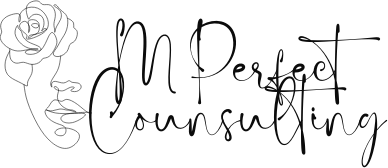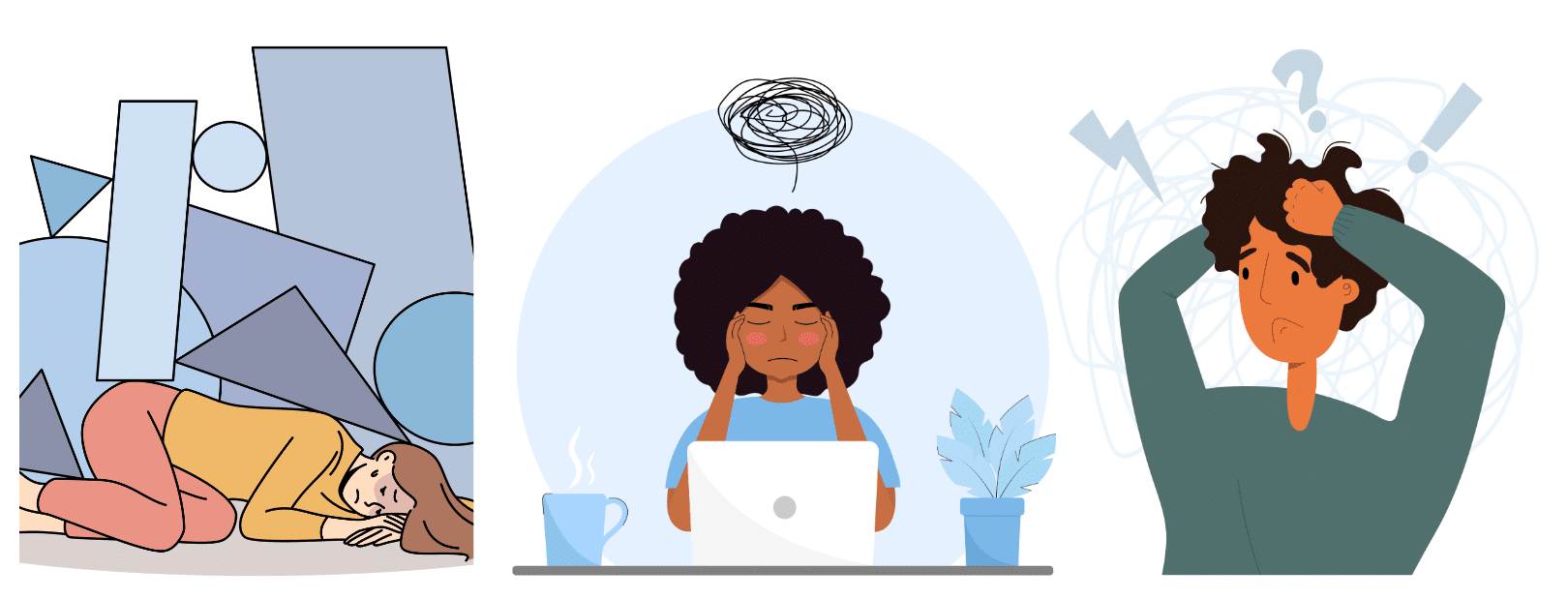*As an Amazon Associate I earn from qualifying purchases via the links in this blog. As a creator of content and products I earn from purchases from links in this blog.*
Did you find out that you are neurodivergent and wandered into this corner of Michelle Obama’s internet? Welcome home boo! Over here we do things differently and by things, I mean therapy and by differently, I mean that we make therapy techniques specific for the way the neurodivergent brain works.
Have you found that “regular” talk therapy doesn’t hit like it is supposed to for you? You need ND specific help.
CBT just not enough? That’s because the B in CBT for you as a ND person, is different. Your behaviors reflect the unique way your mind works so the equation of if-then statements that work for neurotypicals doesn’t add up for you.
An example of a CBT neurotypical equation is: If need to do something then write it in a planner.
As a ND person you might say: “Yeah, that’s cool and all lady, but how when I have written in all 27 planners I have then forget where I put that particular one with the thing written in it so I just buy another one only to use it for a week before it is lost or unused again. Help me work with my brain instead of against it.”
A more ND friendly example would be: If you need to do something then keep one list in one place and take pics of that list daily so you have it with you on the go. Write notes in your phone only when you are out and transfer it to the paper list or magnetic list whenever you walk in your door. You can also take a pic of the list before you leave daily. Even better if you can attach the notepad to the back of your front door and never move it. The key is that you can’t lose things you don’t move. How many times have you lost your tv? None because it doesn’t move. Now how many times per hour do you lose the remote? 10? Because it can move.
For this to happened you need new equations. The old If- then statements need a ND remodel for you.
Here are a few that work.
If I need to get it done, I need to tie it to something else that I know I can get done. Link up low possibility of completion tasks with other tasks that you have a higher probability of finishing.
Link dishes to the timer on the oven and try to beat the clock before your frozen pizza is done. Link yoga poses into commercial breaks and see how long you can do downward dog before parks and rec starts again. Link laundry into your weekly FaceTime with mom and when you get off the phone then that is the limit to the amount of laundry that would have gotten done. Link answering emails with a dictation feature while doing snow angels on the floor since laying down is infinitely more fun than sitting up and when you feel like getting up is when this email session is over. Link drinking eating when you feed your pet to remind you that you need to eat too because you wouldn’t let your pet starve and chances are they wouldn’t mind the company of you sharing a mealtime with them. Link cleaning the bathroom with how long it takes your face mask to dry because 10 minutes of cleaning is better than no minutes of cleaning. I love this quick start timer for small tasks since it is not on your phone where you are prone to a rabbit hole of distractions.
If I have energy then it needs to be expressed not repressed. Listening to your body the first times keeps it from screaming at you later. If you feel like doing burpees/jumping jacks/cartwheels/headstands, then do them. Move your body for your own mental health and well-being
Forcing yourself to sit still when you get the wiggles is going against what your body wants you to do and it uses up your mental energy on that task of stillness instead of the task at hand. Find environmentally appropriate ways to move. A retractable Tennis ball rolling under your feet, talking on the phone while walking in circles, just dance videos on YouTube to favorite songs when antsy, stimming whenever you want, talk out loud to yourself all day, get upside down in an inversion exercise, Eat crunchy things, listen to an energizing playlist, or use fidget jewelry. Express that energy in a way that feels good and makes sense always. Get creative and do what it takes for you to feel ready and focused for what you have to do today.
If sensory regulation is King, then you should treat it as such. Think of each of the five senses separately and discern what they need to feel neutral then do what needs to be done.
It’s like your body’s lights on the dash of a car are lighting up and to make the lights go off you need to check each sense to makes sure it is at homeostasis. Ask yourself questions like: am I hot, cold, hungry, sleepy, is it too loud, do I need more noise or distraction, are my clothes itchy/too tight/ not tight enough, am I dehydrated, are the lights too bright? Most of the time regulating which ever sense is off helps in fixing the issue. My kids constantly touching me and being noisy used to trigger severe irritability and impulsivity until I realized I was touched out and needed touch free time and noise canceling headphones/ ear buds to be in the same room with my children when they are playing. Getting good at assessing situations quickly and taking care of the sensory disturbances creatively so that you can participate in life with your own accommodations is a ND game changer. Use a chart like this one to assess for and create accommodations that make your life easier.
If your systems don’t work, then you don’t either. With most ND people (especially those with ADHD) you’re only as good as your systems allow you to be.
Evaluate what systems you have in place for everything in your life (work stuff, doing notes, scheduling, groceries, play dates, lunches, self-care time, etc. Everything has a “way” that it is being done) and make them “you” friendly.
Instead of doing what works for other people, create systems based off of your particular needs. Make following the dopamine a daily life goal and measure success by your own unique standards so you don’t feel so defeated. Remember, If you are measuring yourself against a neurotypical yard stick you will always come up short. A ND yardstick is not shorter it is just in the form of a curly cue instead of a straight line so the measurement looks different. Executive functioning coaching can help when your executive functioning is not functioning at the level you want it to.
If you do what you can when you can then you won’t beat yourself up for not doing more. Divide tasks by current energy levels and listen to what your body/ mind tells you it has the capacity for right now.
Ride energy waves and hyper focuses so you don’t box yourself into tasks that would be painful to try right now. Download the energy task list for practical ways to start this today. Take one goal and separate it by energy levels. Want to keep the microwave clean? Low energy= cover food in microwave to decrease splatter, mid energy= wipe out crumbs prior to every use of the microwave, high energy= use cleansing cloth to clean the entire microwave. If you separate the tasks this way then you are always working towards the goal of a cleaner microwave even on days where the minimal tasks feel huge.
What other Neurodivergent If-then equations work for you?

